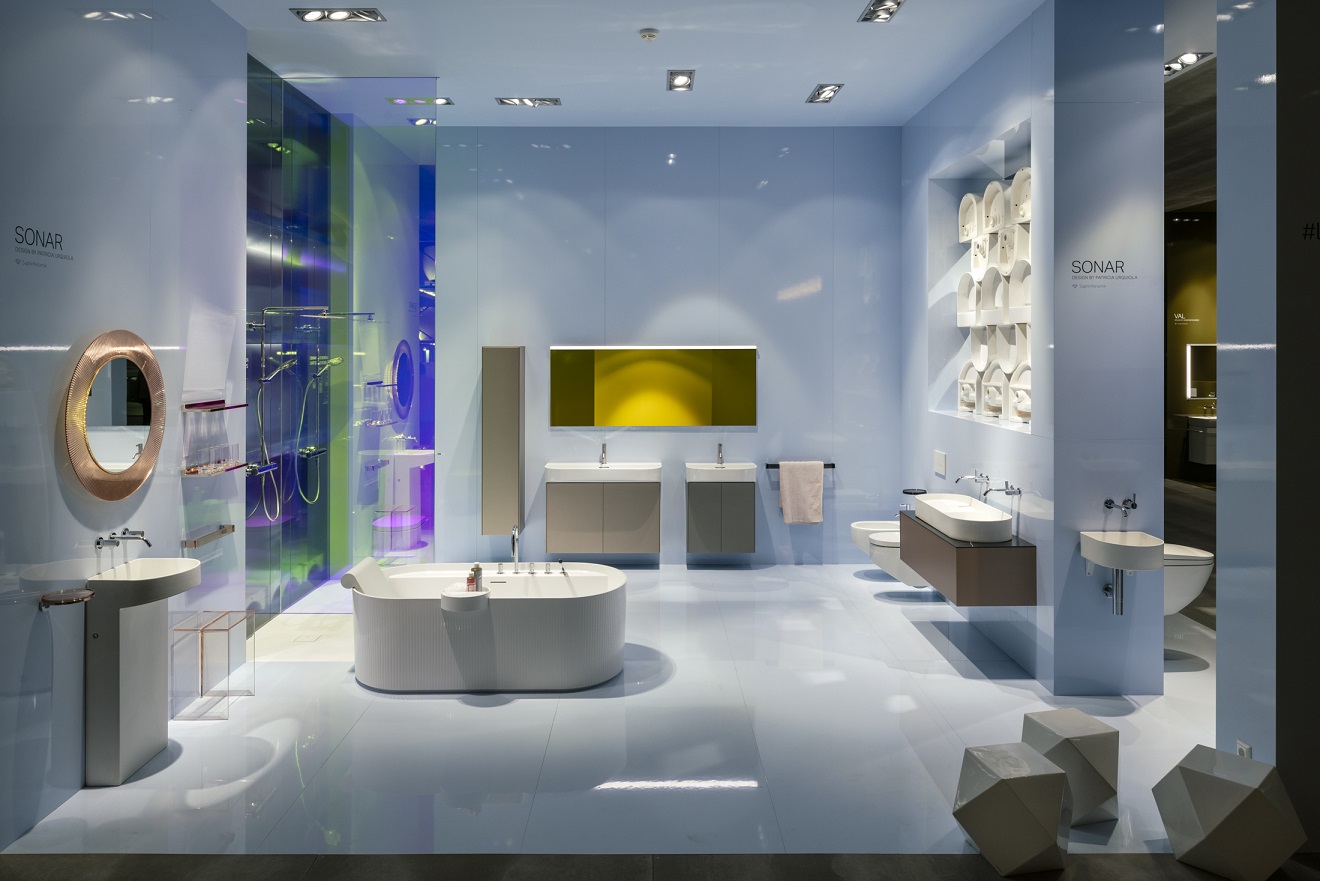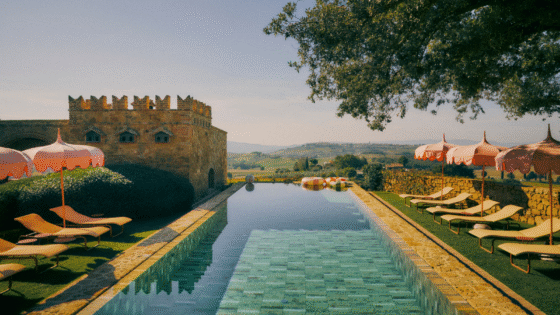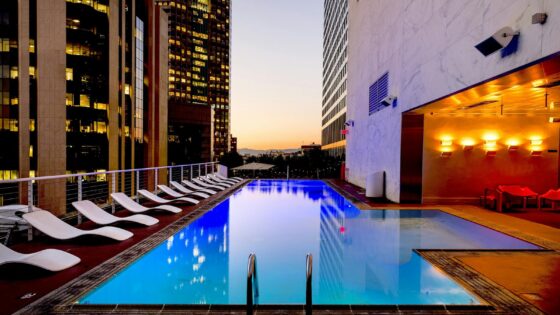As Hotel Designs continues its month putting Bathrooms under the spotlight, editor Hamish Kilburn sits down with designer Patricia Urquiola to understand more about her latest collection reveal with Laufen…
Patricia Urquiola is no stranger to Laufen, as the Spanish designer celebrated at ISH 2019 the launch of her third – yes third – generation of SaphirKeramik, and by doing so has created the new collection, Sonar.

Rediscovering the formal scope of the bathroom – and designed to be insurmountable in bathroom aesthetics – the expressive Sonar collection has already gone on to win an iF Design Award. The material, SaphirKeramik, was first used by the designer for Laufen in 2013 in novel washbasin designs that were simply not possible using conventional bathroom ceramics. Six years later, the material has been used in the brand’s Sonar collection and now offers even greater variety thanks to the addition of more washbasins, WCs, a bidet, a new bathtub and a suite of bathroom furniture.
I recently sat down with the designer in order to understand the context of Sonar as well as what she thinks the future holds for international bathroom design.
Hamish Kilburn: Why do you think more attention is being payed to the design of the bathroom within international hotel design?
Patricia Urquiola: I think that more attention is being payed to all aspects of hospitality and not just bathrooms. Hotel design is now all about an experience that one wants to transmit to the unknown user, and bathrooms are no exception. The design of the bathroom in a hotel project is very important, it is part of the whole room space, of the experience that a certain room can offer in terms of relax and wellbeing.

Image credit: Laufen
HK: What are your thoughts on color in the bathroom?
PU: My approach to colour, for bathrooms and every aspect of a project, is not absolute; it very much depends on the project. At times, color is central and it is therefore given a lot of importance and space, it becomes essential for forms to come to life. Other times, palettes are a lot more intimate with very little color and more attention to textures or materials. For example, the bathrooms at Room Mate Hotel Giulia in Milano are extremely colorful, they reflect the language that we used throughout the whole project. On the other hand, for a recent project in Mumbai in which we featured the Sonar collection, the focus isn’t on color but rather on materials and textures: marble and wood contrast beautifully with the ceramic of the collection.
HK: How has SONAR evolved? What’s changed, in regards to bathroom technology, since the first generation of SONAR?
PU: Sonar is manufactured using a high-tech ceramic material called SaphirKeramik, a material developed by Laufen that allows for the ceramic to be very thin for an industrial product. When I started my collaboration with the brand it had already been used for previous collections, what I wanted to do was to really exploit the material’s characteristics: strong yet light, it has a glow to it and a certain amount of detail can be incorporated. I wanted to work with all these positive aspects of SaphirKeramik and experiment with three-dimensional surfaces, to try and add spatial volumes to it.
“I think that in 30 years’ time things will be very different, from the houses we will live in, the cars we will drive, the hotels we will stay in…” – Patricia Urquiola
HK: The inspiration for your latest collection was ‘soundwaves that spread in water’…Was this a lightbulb moment, and if so – when and where were you at the time?
PU: Usually inspiration comes to me in waves of moments, images, trips, people… it is hard to pinpoint it to a specific time. The strictness of architectural minimalism was definitely on my mind, a sense of lines, purity and geometry. But also water, its energy and its dynamic movement that never stops. The meeting point of these two ideas is the inspiration behind the Sonar collection, sort of a game between such contrasting shapes, between softness and severity. The lines etched on the exterior of the pieces fade on one end, disappearing back into the material, just like the waves in the ocean.
HK: In your eyes, what does the bathroom of the future (say 30 years from now) look like?
PU: That is very hard to imagine! I think that in 30 years’ time things will be very different, from the houses we will live in, the cars we will drive, the hotels we will stay in… we are moving towards a smarter future, things will be more specialised, personalised, mobile. Frameworks and systems will become more complex and we all will learn to navigate them. We are already seeing a very big change in materials, in how we make them and reuse them and this will also affect architectural projects, the way in which bathrooms will be designed and built will change radically. Spaces and functions are becoming hybrid, they are being redefined because our focus is shifting towards functionality.
Laufen is one of our recommended suppliers. To keep up to date with their news, click here. And, if you are interested in becoming one of our recommended suppliers, click here.




